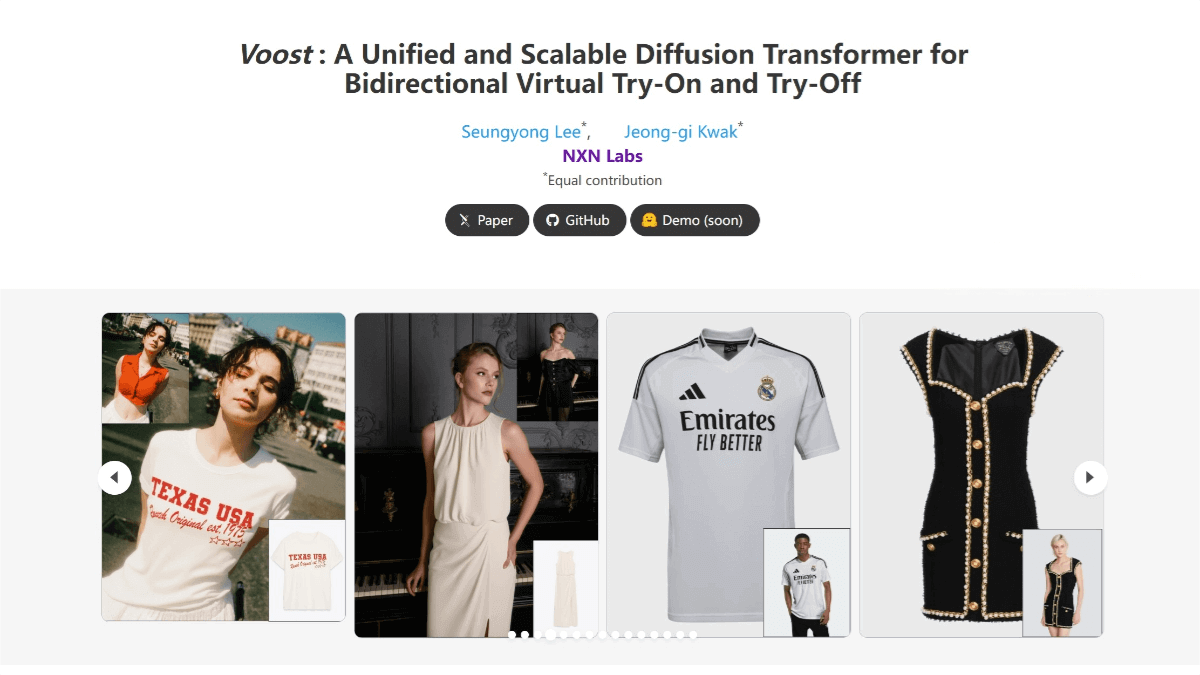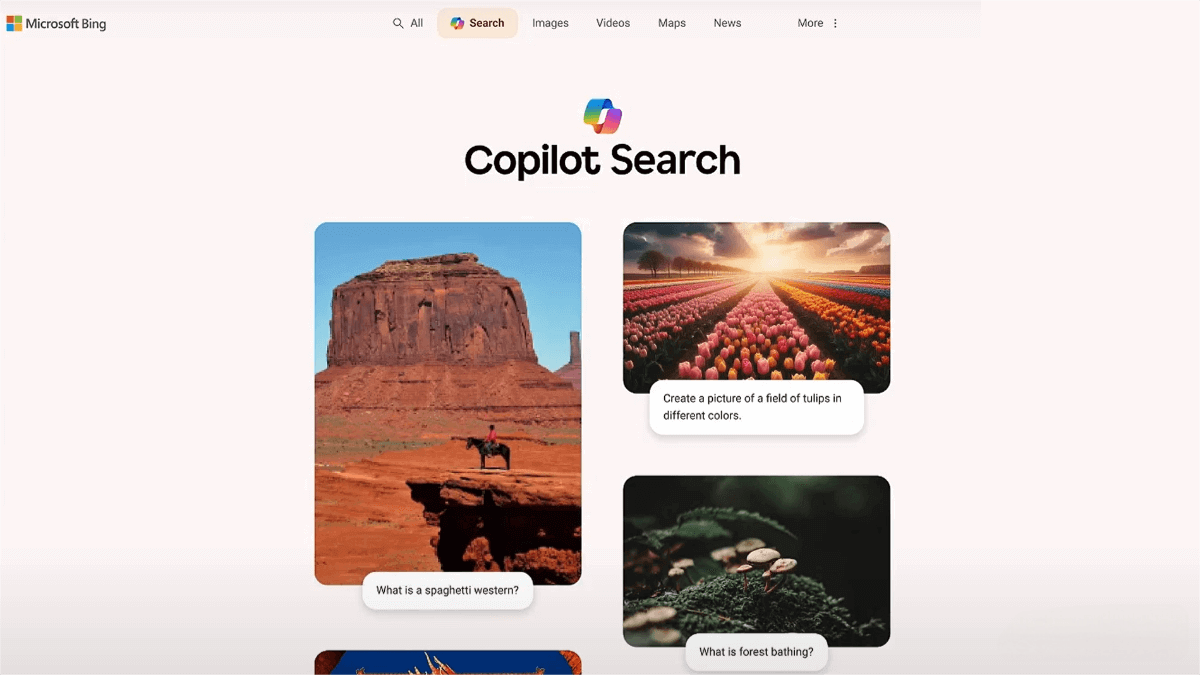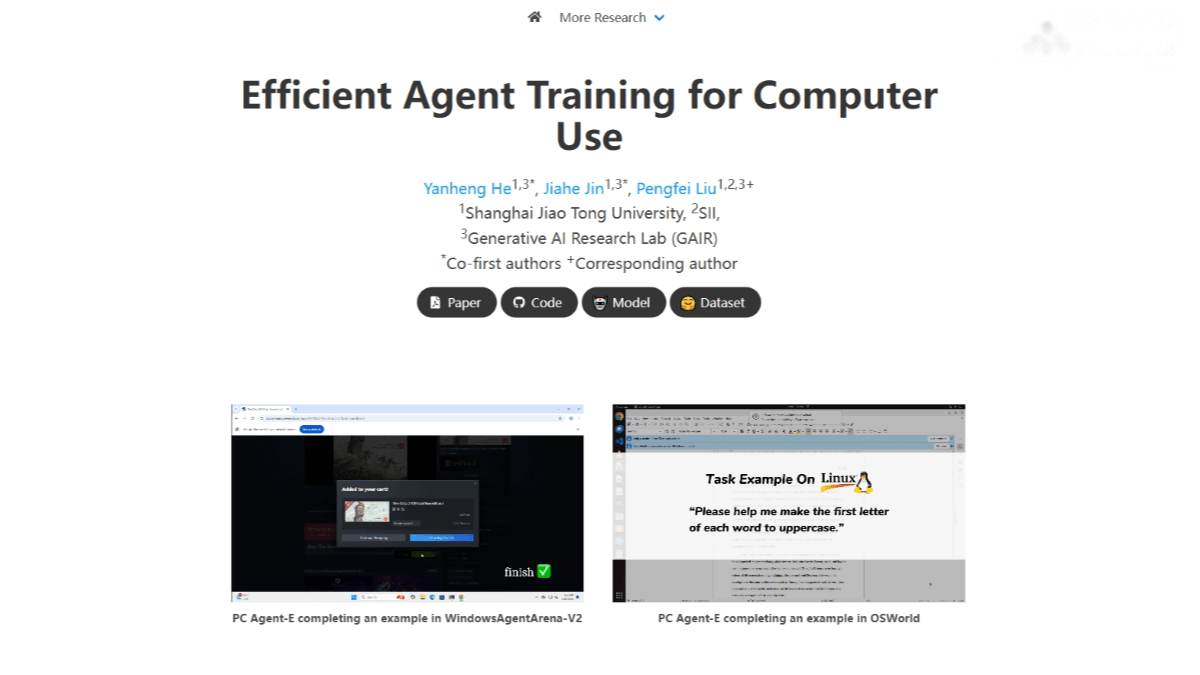Voost – Innovative Bidirectional Virtual Try-On and Try-Off AI Model
What is Voost?
Voost is an innovative virtual try-on and try-off model developed by NXN Labs, built on a unified and scalable Diffusion Transformer (DiT) framework. It can handle both virtual try-on and try-off tasks simultaneously, generating high-quality image results. By jointly learning these two tasks, Voost leverages a bidirectional supervision mechanism, allowing each clothing–person pair to provide supervisory signals for both directions of generation. This significantly enhances the model’s reasoning ability regarding the relationship between clothing and the human body, without relying on task-specific networks, auxiliary losses, or extra labels.

Key Features of Voost
-
Bidirectional Virtual Try-On and Try-Off: Voost can handle both virtual try-on and try-off tasks, generating high-quality images that allow users to see how clothing looks when worn or removed.
-
Unified Framework: Using a single Diffusion Transformer (DiT), Voost jointly learns the try-on and try-off tasks without task-specific networks, auxiliary losses, or extra labels, simplifying the model structure and improving efficiency.
-
Enhanced Relationship Reasoning: Through a bidirectional supervision mechanism, each clothing–person pair provides signals for both directions of generation, strengthening the model’s reasoning about the relationship between clothing and the human body.
-
Improved Robustness: Attention temperature scaling is introduced to improve robustness to changes in resolution or masks. A self-correcting sampling strategy validates bidirectional consistency, enhancing the stability and accuracy of generated results.
-
High-Quality Generation: Across multiple benchmarks, Voost achieves state-of-the-art performance in clothing alignment and visual fidelity, demonstrating excellent generalization ability and producing realistic try-on and try-off images.
-
Flexible Conditional Inputs: Supports flexible conditioning for generation direction and clothing categories, enhancing the model’s adaptability to various clothing types and human poses.
Technical Principles of Voost
-
Unified Diffusion Transformer Framework: Voost uses a single Diffusion Transformer (DiT) to jointly learn try-on and try-off tasks. The bidirectional supervision mechanism allows each clothing–person pair to provide signals for both directions, improving reasoning about clothing–body relationships.
-
Bidirectional Supervision Mechanism: By modeling try-on and try-off jointly, Voost uses bidirectional supervisory signals to improve the model’s understanding of clothing–body correspondence without requiring additional labels or task-specific networks.
-
Attention Temperature Scaling: Adjusts attention weights to enhance robustness to changes in resolution or masks, ensuring stability and consistency under different input conditions.
-
Self-Correcting Sampling Strategy: Cross-validates bidirectional generation results through self-correcting sampling, enhancing the stability and accuracy of generated images while ensuring visual consistency and realism.
Project Links
-
Official Website: https://nxnai.github.io/Voost/
-
GitHub Repository: https://github.com/nxnai/Voost
-
arXiv Paper: https://arxiv.org/pdf/2508.04825
Applications of Voost
-
E-Commerce Platforms: Provides virtual try-on functionality, helping users visualize clothing on themselves, improving shopping experiences, reducing returns due to size or style mismatches, and boosting conversion rates.
-
Fashion Design: Designers can quickly preview how clothing designs fit different body models, evaluate feasibility in advance, optimize design workflows, and reduce costs.
-
Personalized Customization: Offers consumers personalized virtual try-on experiences, allowing them to select different clothing styles, colors, and combinations to achieve custom-tailored services.
-
Clothing Display: Brands and merchants can showcase clothing online using Voost’s virtual try-on functionality, attracting more user attention and enhancing brand visibility and product exposure.
-
Virtual Fitting Rooms: Provides virtual fitting solutions for offline stores, reducing customer waiting times, improving fitting efficiency, and offering richer try-on experiences.
Related Posts




